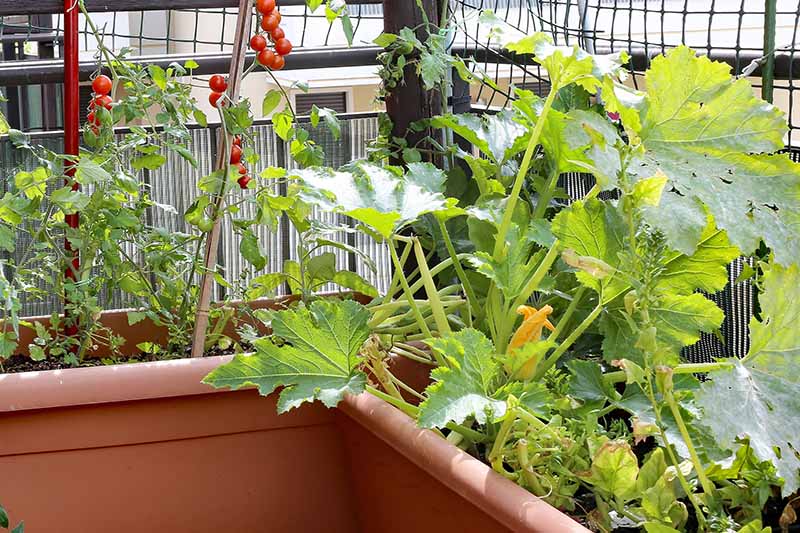Whether you have a thriving garden or a limited amount of space, growing zucchini in containers is an excellent option. It allows you to enjoy the delicious taste of homegrown zucchinis without the need for a large plot of land. However, before you start planting, it’s essential to choose the right container size. In this article, we will explore the various container sizes suitable for growing zucchini and provide you with helpful tips to ensure your zucchini plants thrive and produce an abundant harvest. Get ready to discover the perfect container size to nurture your own vibrant zucchini garden.
Factors to Consider
Available Space
When deciding on the size and type of container for growing zucchini, the first factor to consider is the amount of available space you have. Zucchini plants require a minimum of 3 to 4 square feet of space for proper growth and development. If you have limited space, you may opt for smaller containers or consider growing compact or dwarf varieties of zucchini.
Zucchini Variety
The choice of zucchini variety is another important factor to consider when selecting a container size. There are three main types of zucchini varieties: bush zucchini, standard zucchini, and climbing zucchini. Bush zucchini plants are compact and ideal for smaller containers, while standard zucchini varieties require slightly larger containers. Climbing zucchini, on the other hand, have vining habits and need larger containers or vertical structures for support.
Root System
The root system of zucchini plants is relatively extensive and requires adequate space to grow. It is important to choose a container that provides sufficient root space for healthy plant growth. The depth of the container is crucial as zucchini plants have long and spreading roots. A container that is at least 12 inches deep is recommended to accommodate the root system effectively.
Watering Needs
The watering needs of zucchini plants are crucial for their overall health and productivity. Containers with good drainage are essential to prevent waterlogging, which can lead to root rot and other moisture-related issues. Additionally, smaller containers tend to dry out more quickly and will require more frequent watering, while larger containers can retain moisture for longer periods of time. Consider your watering routine and the climate in your area when choosing the size of your container.
Mobility
Mobility is an essential factor to consider, especially if you plan to move your zucchini plants around your garden or patio. Some containers come with built-in wheels or casters, making it easier to reposition them as needed. This is particularly useful if you want to provide your zucchini plants with optimal sunlight exposure or protect them from extreme weather conditions.
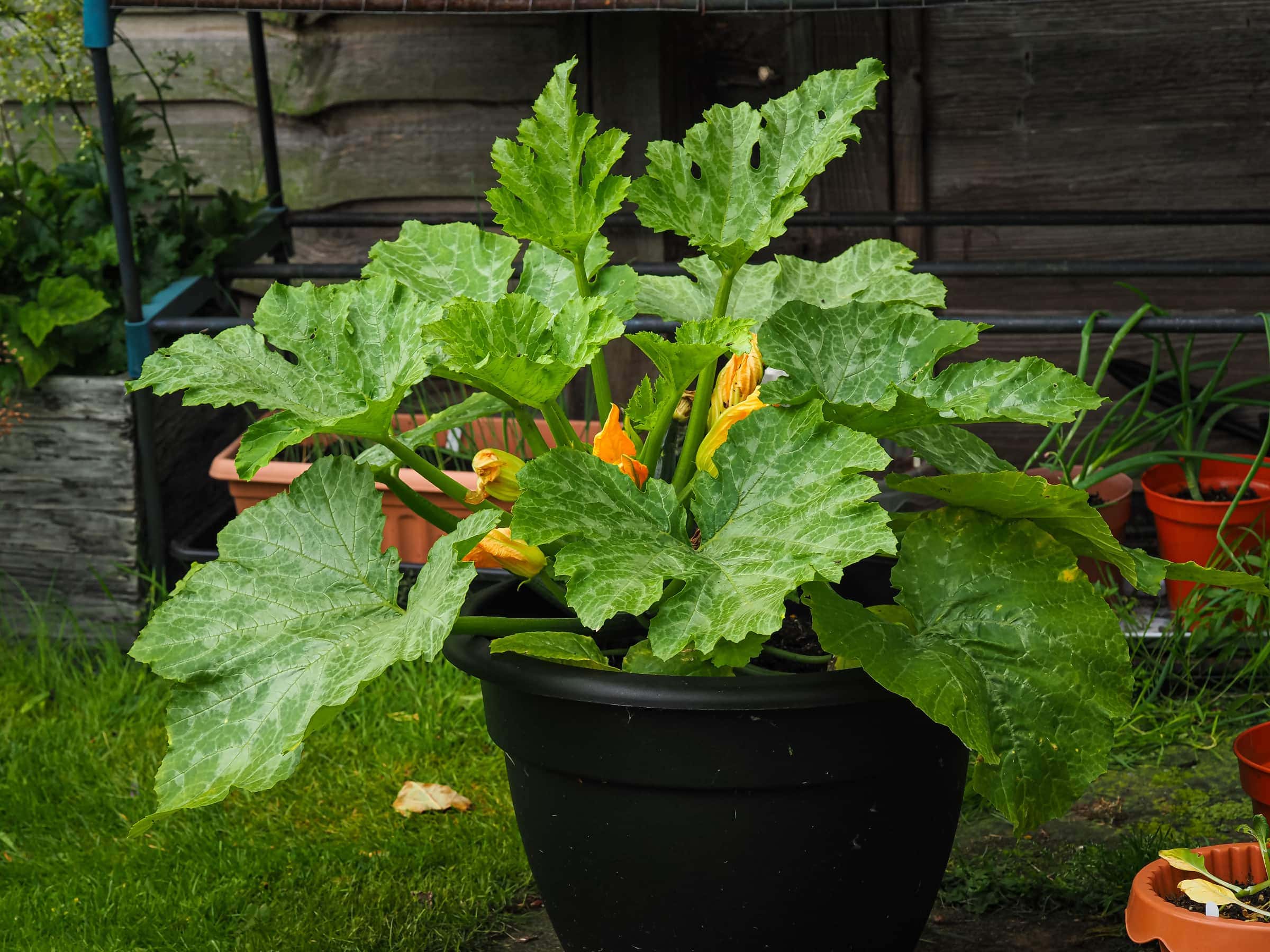
Container Options
Pots
Pots are one of the most common types of containers used for growing zucchini. They come in a variety of sizes, shapes, and materials, allowing you to choose the one that best suits your needs and preferences. Clay pots provide good drainage but can be heavy and prone to cracking. Plastic pots are lightweight, affordable, and retain moisture more effectively. However, they may not be as aesthetically pleasing as other materials.
Grow Bags
Grow bags are a popular choice among gardeners due to their affordability and versatility. Made from fabric or sturdy plastic, grow bags provide excellent aeration and drainage for the roots of zucchini plants. They are also lightweight and easy to move around, making them a convenient option for those with limited space or who want to move their plants frequently.
Tubs
Tubs, such as plastic storage containers or bins, can be repurposed as zucchini containers. They offer a large surface area and sufficient depth for the root system to grow. Tubs are lightweight and can easily be moved, and their durability makes them a long-lasting option. Just ensure that the tub has adequate drainage holes to prevent waterlogging.
Barrels
Barrels provide a spacious and visually appealing option for growing zucchini. They can be repurposed wine barrels, whiskey barrels, or specially designed half-barrel planters. Barrels offer ample room for the root system to spread, making them suitable for larger zucchini varieties. However, barrels can be heavy and challenging to move, so consider their placement carefully.
Raised Beds
Raised beds offer the advantage of providing a larger growing area and better drainage for zucchini plants. They can be constructed from various materials, such as wood, metal, or composite materials. Raised beds provide excellent mobility in terms of location, as they can be easily moved or extended. However, the initial setup may require more time and effort compared to other container options.
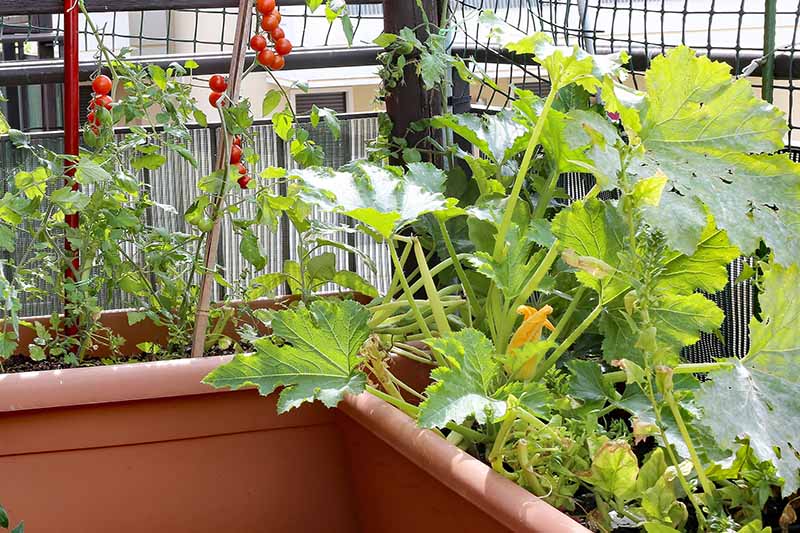
Container Sizes
Small Containers (1-2 gallons)
Small containers, ranging from 1 to 2 gallons, are suitable for growing compact or dwarf varieties of zucchini, such as bush zucchini. These containers are ideal for gardeners with limited space or those who want to grow zucchini on balconies or patios. Small containers may need more frequent watering and monitoring to ensure adequate moisture levels for the plants.
Medium Containers (3-5 gallons)
Medium-sized containers, between 3 and 5 gallons, are suitable for growing standard zucchini varieties. These containers provide enough space for the root system to grow and allow for robust plant development. They strike a balance between space requirements and manageability, making them a popular choice for many gardeners.
Large Containers (7-10 gallons)
Large containers, ranging from 7 to 10 gallons, are recommended for climbing zucchini varieties. These vining zucchini plants require more space for their vigorous growth habit and sprawling vines. The larger container size allows for a well-developed root system and supports the vertical growth of the plant. Keep in mind that larger containers may require more frequent watering, as they can dry out more slowly.
Extra Large Containers (12+ gallons)
If you have ample space and want to maximize the yield of your zucchini plants, extra-large containers with a capacity of 12 gallons or more are the way to go. These containers can accommodate the root system of climbing zucchini while providing ample space for the plant to flourish. However, they may be heavy and difficult to move, so consider their placement carefully.
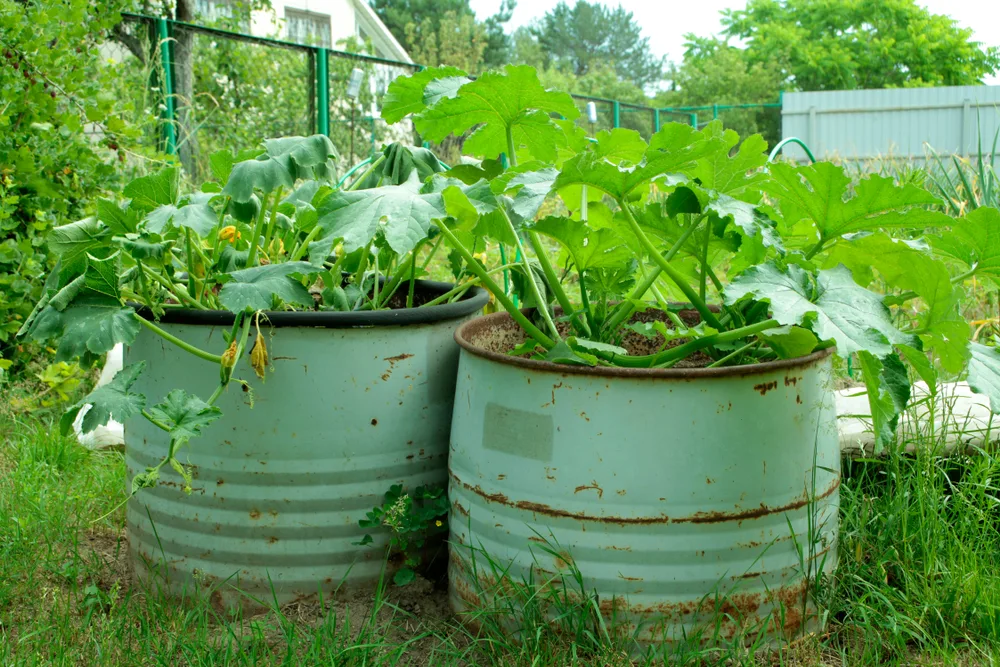
Recommended Container Sizes for Different Zucchini Varieties
Bush Zucchini (Compact varieties)
For bush zucchini, such as the ‘Astia’ or ‘Eight Ball’ varieties, smaller containers between 1 and 2 gallons are sufficient. These compact varieties do not require as much space for their root system and are well-suited for container gardening in smaller spaces.
Standard Zucchini (Regular-sized varieties)
Standard zucchini varieties, such as ‘Black Beauty’ or ‘Costata Romanesca,’ require medium-sized containers between 3 and 5 gallons. These containers provide an adequate balance between space requirements and manageability, allowing for healthy plant growth.
Climbing Zucchini (Vining varieties)
Climbing zucchini, such as ‘Tromboncino’ or ‘Italiano Largo,’ need larger containers with a capacity of 7 gallons or more. These vining varieties have vigorous growth habits and sprawling vines, necessitating more space for their root system and vertical growth.
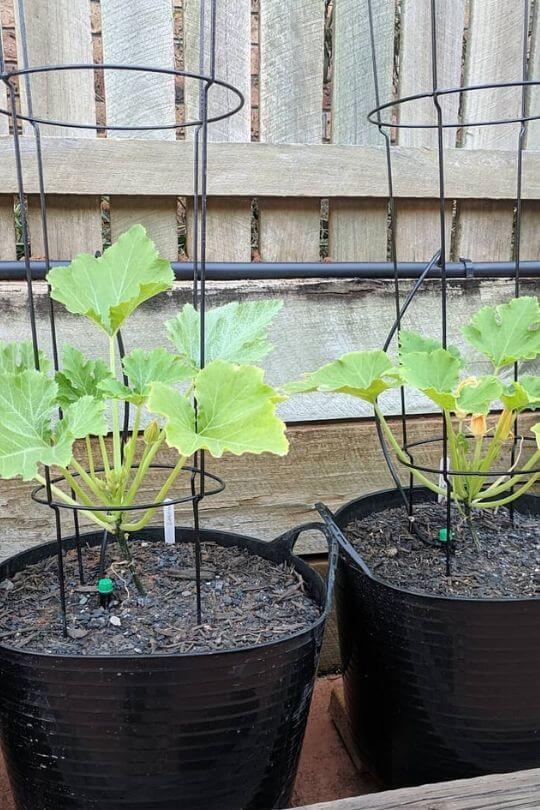
Container Preparation
Drainage Holes
Before planting your zucchini, ensure that your chosen container has proper drainage. Adequate drainage holes are essential to prevent waterlogging, which can lead to root rot and other plant health issues. If your container does not have pre-drilled holes, you can carefully create them using a drill with a suitable bit size.
Potting Mix
The choice of potting mix is crucial for the success of your zucchini plants. Use a high-quality potting mix specifically formulated for containers to ensure proper drainage, aeration, and nutrient availability. Avoid using garden soil, as it can become compacted in containers and may contain weed seeds or pathogens.
Mulching
Mulching the surface of the potting mix can help conserve moisture, suppress weeds, and regulate soil temperature. Organic mulch, such as straw or wood chips, is recommended for zucchini containers. Apply a layer of mulch around the base of the plant, taking care to keep it away from the stems to prevent rotting.

Maintenance and Care Tips
Watering
Consistent and adequate watering is crucial for the health and productivity of your zucchini plants. Check the moisture levels of the potting mix regularly and water when the top inch of soil feels dry. Avoid overwatering as it can lead to root rot, but also ensure that the plants do not experience prolonged periods of drought.
Fertilizing
Zucchini plants are heavy feeders and require regular fertilization to thrive. Use a balanced, slow-release organic fertilizer or a water-soluble fertilizer specifically formulated for vegetables. Follow the manufacturer’s recommendations for application rates and frequency, and ensure that the fertilizer is evenly distributed around the plants.
Pruning
Pruning zucchini plants helps promote better air circulation, reduce disease risk, and improve fruit production. Remove any yellowing or damaged leaves regularly, and pinch off the growing tips of the vines once they reach the desired length. This encourages lateral branching and better fruit set.
Supporting Vine Growth
If you are growing climbing zucchini varieties, provide support structures such as trellises, stakes, or cages. Train the vines to grow vertically to save space and improve airflow. Gently tie the vines to the support structure using soft twine or garden tape, taking care not to injure the plants.
Pest and Disease Control
Regularly inspect your zucchini plants for any signs of pests or diseases. Common pests that affect zucchini include aphids, squash bugs, and cucumber beetles. Use organic pest control methods such as handpicking or introducing beneficial insects to manage pest populations. Practice good garden hygiene and promptly remove any infected leaves or fruits to prevent the spread of diseases.
